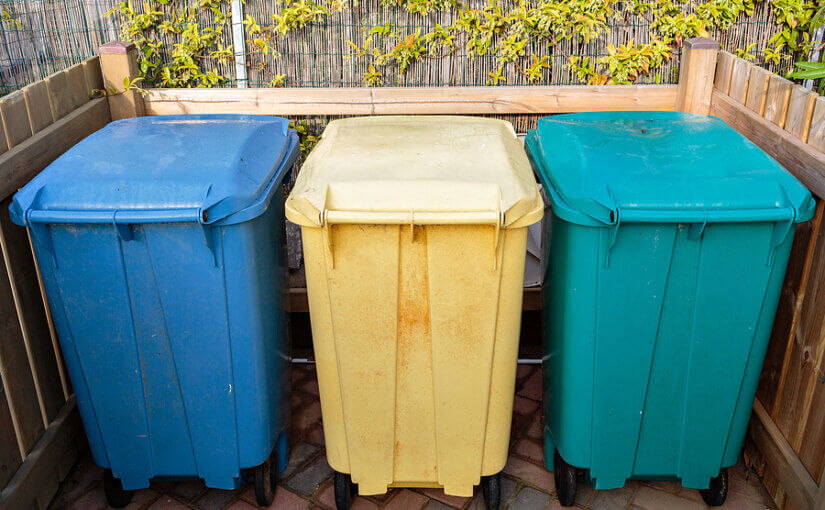In England, the staggering 409 kilograms of waste per person collected in 2021 by local authorities is a stark reminder of our collective impact on the planet. Yet our waste footprint extends far beyond the confines of our homes, whether at work, dining out, or enjoying a holiday.
In light of such extensive waste generation, we all must ensure proper categorisation and disposal of waste. Everyone, from individuals to companies and recycling centres, is responsible for checking recyclable materials are appropriately recycled and non-recyclables are disposed of in the safest manner possible.
Join us as we explore the diverse waste types, look at what they entail and outline the most effective methods for discarding them.
Liquid waste
Liquid waste is defined as any liquid that requires disposal. This includes grease, oil, wash water, detergents, and sanitary waste, and is generally found in households and specific industries.
Safe disposal is crucial to protect the environment, wildlife, and humans. Otherwise, there’s a high risk of surface water pollution, soil contamination, and the release of greenhouse gases.
Liquid waste can be dealt with in three ways: containment, treatment, and disposal. It can’t be placed in a bin or skip, so we’d recommend contacting a liquid waste removal company if you need assistance.
Four common liquid waste disposal processes include:
Dewatering – Non-hazardous solid waste is separated from the liquid waste when pumped into a durable container. The water is then treated, recycled, and reused.
Sedimentation – Gravity is used to separate water from non-hazardous solid waste. As with dewatering, the liquid waste is then treated and reused.
Composting – This clean and environmentally friendly disposal approach transforms liquid, non-hazardous waste into compost. By extracting the water, the organic material is isolated and processed into organic fertiliser, enriching soil health and promoting crop and plant growth.
Incineration – Hazardous liquid waste, including acids and chemicals, is disposed of through incineration. Specialised furnaces subject the waste to intense temperatures, converting it into ash and gases.
The ash can be safely disposed of in landfills, while gases require further treatment before their release into the atmosphere.
Solid waste
Solid waste is any unwanted or discarded materials that aren’t liquid. This includes rubbish or sludge. Solid waste can easily be disposed of in a general waste bin, recycling bin, or skip.
Glass and ceramics – This solid waste type can cause accidents and injuries if not disposed of correctly. Glass is highly recyclable and should be disposed of in recycling bins or skips hired from companies that recycle. A skip is the perfect disposal method for ceramics like kitchen and bathroom tiles.
Plastics – Some plastics are recyclable, and others aren’t. Always check the recycling symbol on any plastic item you discard to check if it’s recyclable and what plastic type it is.
Paper – Paper is easy to recycle. Cardboard, newspaper, greeting cards, wrapping paper, packaging and anything made from uncoated paper or cardboard can be recycled.
Metals – Most metals can be recycled. Take them to a scrap metal yard, and you might be paid for it.
Recyclable waste
Recyclable waste is anything thrown out that can be recycled — typically, solid waste. Checking product information will confirm if most products are recyclable.
WRAP (The Waste and Resources Action Program) collaborates with multiple recycling and environmental associations to provide a clear guide on what can and can’t be recycled. The guide also explains how waste should be presented for recycling.
However, some items need breaking into pieces before they can recycled — for example, furniture. Consider upcycling before you break things in good condition to send them for recycling. If you don’t have time for an upcycling project, list the item for free on Gumtree, Freecycle, or Facebook Marketplace, and someone will take it off your hands.
Hazardous waste
Hazardous waste is incredibly harmful to yourself and the environment and is defined as corrosive, flammable, reactive or toxic.
Examples include asbestos, fluorescent light bulbs, chemicals and solvents, and brake fluid.
Three methods are used to treat hazardous waste, depending on the type.
Thermal treatment, or incineration, is conducted at an extremely high temperature to detoxify the waste.
Alternatively, biological treatment is used, where waste is carefully mixed with surface soil on a suitable tract of land. Microbes and nutrients are sometimes added to improve the process.
Physical treatments are the final option, including solidification, flotation, filtration, sedimentation, and evaporation.
Post-treatment, the remains of hazardous waste are disposed of. This is typically in a landfill, the ocean, or underground.
Waste you can put into a skip
Checking what can be recycled and which bin it goes in can be arduous when decluttering your home, carrying out a house clearance, or doing renovation work.
With skip hire, there’s no need for multiple bins and waste areas — you can place it all into the skip and forget about it. Before booking, double-check our list of what is and isn’t accepted in a skip.
If you need quick and efficient waste removal, contact us to hire a skip from Forge Skip Hire. We’ll recycle all waste where possible and create energy from the rest to power homes and businesses.
